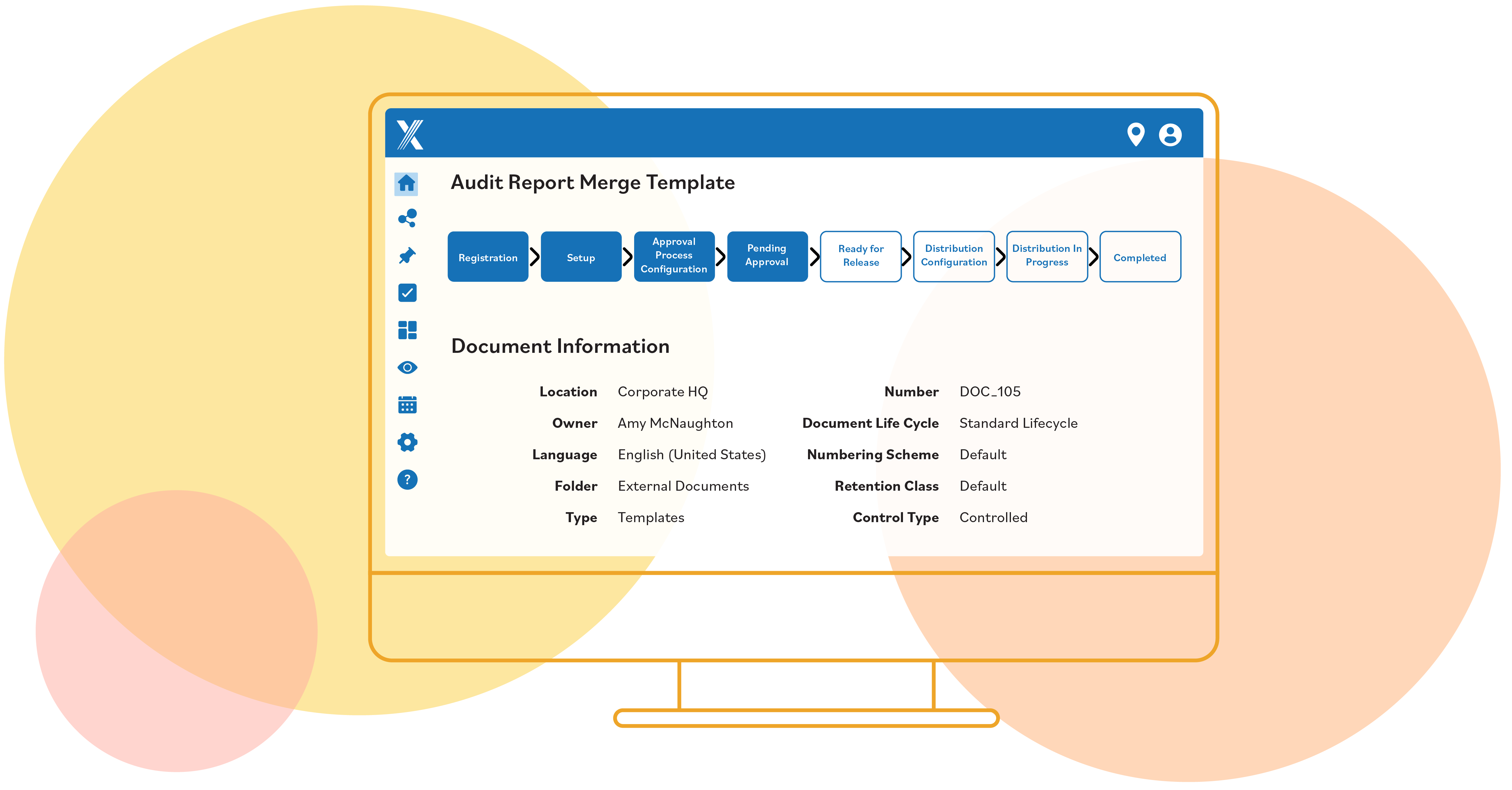How to Identify and Prevent the Top 10 Causes of Workplace Injuries
December 6, 2023
In 2022, the US Bureau of Labor recorded a staggering 2,804,200 non-fatal injuries. These statistics are alarming. Workplace safety is not just a regulatory obligation; it is also a necessity for the well-being of frontline workers and the financial health of businesses. Consider this. The total cost of work injuries in 2021 reached $167 billion dollars, impacting not just individuals but the broader economy.

While there have been significant advancements in health and safety, we continue to see the same injuries year after year. In fact, according to OSHA, fall protection was cited as the top violation for the 13th consecutive year, signaling an enduring need for targeted intervention.
The administration compiles and publishes an annual list of the Top 10 Violations to alert businesses to commonly cited standards that lead to worker injuries. Understanding them empowers organizations to address common hazards and mitigate risks preemptively.
As a safety community, exploring these industry trends and statistics is crucial to identifying better solutions to protect workers from preventable injuries. This will contribute to worker well-being, more productive businesses and a more robust economy.
OSHA’s Top 10 Violations in 2023
A closer examination of some of these violations reveals the stark reality surrounding workplace safety. Falls, for example, is the number one violation 13 years in a row and contributes to an average of 200,000 serious injuries and 350 fatalities annually. What’s notable is that over 50% of these falls occur on the same level, often attributed to slips and trips. Highlighting the importance of OSHA’s Walking-Working Surfaces and Fall Protection standards, these figures underscore the necessity for robust safety protocols and adherence to guidelines.
Hazard communication also remains a constant challenge. The unseen dangers of chemical exposures emphasize the importance of proper labeling, training and maintaining up-to-date safety data. A resilient hazard communication program, including annual reviews and training, ensures that workers are well-informed and protected against potential long-term health risks.
Lockout/tagout is another key focus, as a typical program can contain more than 80 separate elements to secure equipment, machinery or processes effectively to prevent hazardous energy from being introduced during servicing or repair. A robust system also includes the training and coordination of contract workers to ensure that they are properly informed and protected from hazardous energy.
Machine-related injuries add an additional layer to safety. Moving machine parts pose a severe risk, capable of causing crushing injuries, burns or even amputations. As mandated by OSHA, safeguards are imperative to mitigate these risks, emphasizing the need for continuous inspection and adherence to safety standards.
The Impact of Workplace Injuries on Businesses
These common workplace injuries globally exert a substantial toll on local and national economies. Direct costs of workplace injuries and fatalities are significant, including workers’ compensation, medical treatment, therapy, civil liability damages and litigation expenses. Indirect costs often go unnoticed and contribute substantially to businesses’ financial strain. These include lost wages during work stoppages, OSHA fines and enforcement actions, recovery of lost production, additional human resources, administrative time, increased workers’ compensation coverage, and the ripple effect of reduced employee morale.
The financial burden is strikingly evident in the total cost of work injuries in 2021, which amounted to $167 billion in the United States alone. This figure covers wage and productivity losses, medical expenses, administrative costs and additional expenses such as vehicle damage and fire losses. Businesses are grappling with an average cost per worker of $1,080, emphasizing the economic imperative of a safer workplace.
In Canada, the economic cost stands at C$26.8 billion, while in Britain, it reaches around £20.7 billion. Australia’s economy is estimated to be $28.6 billion larger without work-related injuries and illnesses. These alarming statistics emphasize the urgent need for businesses to address these issues head-on.
However, nothing compares the personal cost to employees who fall victim to workplace injuries. Workers’ compensation covers only a percentage of lost income for those with long-term disability, often driving individuals and families into poverty. The financial strains of transportation to medical treatments, hospitalization and in-home care compound the challenges, leaving a lasting impact on the lives of those affected.
Best Practices for Workplace Injury Prevention
Effective injury prevention measures are pivotal for fostering a safe and productive work environment. To begin, organizations should prioritize comprehensive training programs that comply with regulatory standards and instill a deep understanding of the potential hazards within the workplace. Regular safety training sessions can empower employees to identify risks, operate machinery safely and adhere to established protocols, contributing to a culture where safety is a shared responsibility.
Moreover, establishing clear communication channels is fundamental for injury prevention. A strong communication program should include regular safety briefings, accessible safety data reports and visible signage. Ensuring that employees are well informed about the potential dangers of their work environment, the proper use of personal protective equipment (PPE) and safety procedures can significantly reduce the likelihood of accidents.
In conjunction with training and communication, proactive risk assessments help to prevent injuries. Regularly evaluating work processes, identifying potential hazards and implementing corrective measures can preemptively address safety concerns. This includes inspecting equipment for wear and tear, assessing ergonomic factors and consistently updating safety protocols based on evolving industry standards. By integrating risk assessments into routine operations, organizations create a continuous feedback loop that adapts to the dynamic nature of workplaces, minimizing the likelihood of accidents.
In essence, a holistic approach to injury prevention involves a combination of well-executed training, open communication and proactive risk assessments. These best practices mitigate the risk of injuries and contribute to a workplace culture where safety is prioritized, fostering a more productive and profitable business in the long run.

Intelex Software Solutions
Intelex EHS software provides a range of features and tools that help tackle the top 10 violations identified by OSHA. Each application within the software contributes to creating a powerful safety management system. The software facilitates the seamless collection of safety data, providing organizations with a centralized hub to systematically gather information on observations, near-misses and incidents. More than just a data repository, Intelex transforms this raw data into actionable insights, empowering safety professionals to analyze trends, identify potential hazards and implement targeted preventive measures. This analytical capability is critical in fostering a proactive approach to safety.
Here are the top suite of tools to create and maintain a resilient safety management system:
- Safety Observations to gain increased visibility into both positive behaviors and risks which helps prevent workplace incidents from happening in the first place.
- Incident Reporting to capture, track, investigate and report on all incidents and near-misses, including injuries and illnesses, spills, property damage and vehicle incidents.
- Audit Management that includes scheduling, tracking, data collection and reporting for all internal or external audits to simplify and ensure compliance across all company locations and operating jurisdictions.
- Document Control improves document management across the complete lifecycle of an organization’s activities. It’s important to control access to sensitive files, forms and reports while preventing errors, reducing risk and improving visibility.
- Training Management that makes it easy to plan and track EHS training for a global workforce. Worker education and training are critical to building a robust and resilient health and safety culture while staying on top of diverse and continuously evolving industry regulations.
Regulatory Compliance and Reporting
When it comes to simplifying and streamlining regulatory compliance processes for businesses, particularly in adhering to OSHA standards, Intelex EHS software plays a pivotal role. OSHA’s intricate recordkeeping requirements, as outlined in the Recordkeeping Rule, necessitate meticulous documentation of workplace injuries and illnesses. Intelex addresses this specific challenge with Occupational Injury and Illness Reporting Software, specifically designed to assist in electronically reporting incidents deemed OSHA recordable for OSHA Form 300 and 301.
Considering that regulatory requirements constantly evolve, Intelex’s solution adapts seamlessly to the recent amendments in OSHA’s regulation. Effective January 1, 2024, the amended regulation mandates that organizations in specific industries with more than 100 employees electronically submit Form 300 and Form 301 once a year. Intelex facilitates this process by automatically populating regulatory forms with data captured. This saves valuable time for EHS professionals and virtually eliminates the risk of filing mistakes, ensuring data consistency and accuracy – a crucial factor in regulatory compliance.
Intelex EHS software is a trusted partner for businesses, leveraging technology to navigate the complexities of regulatory compliance and contribute to a safer, more resilient workplace culture.






